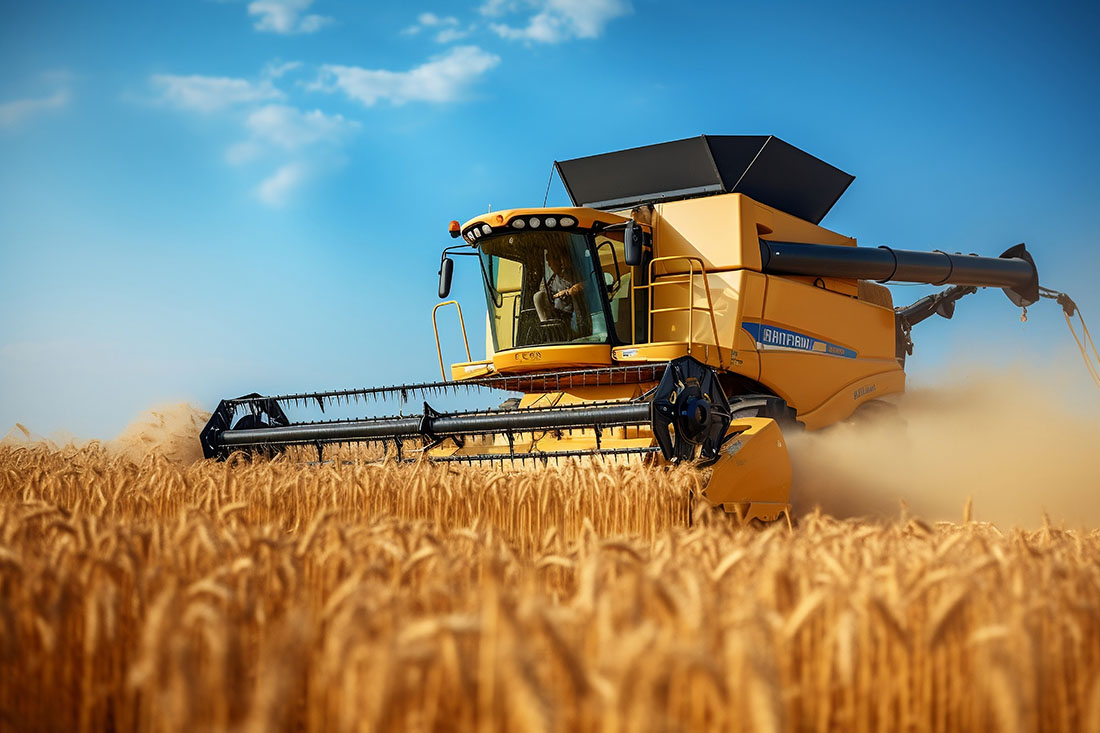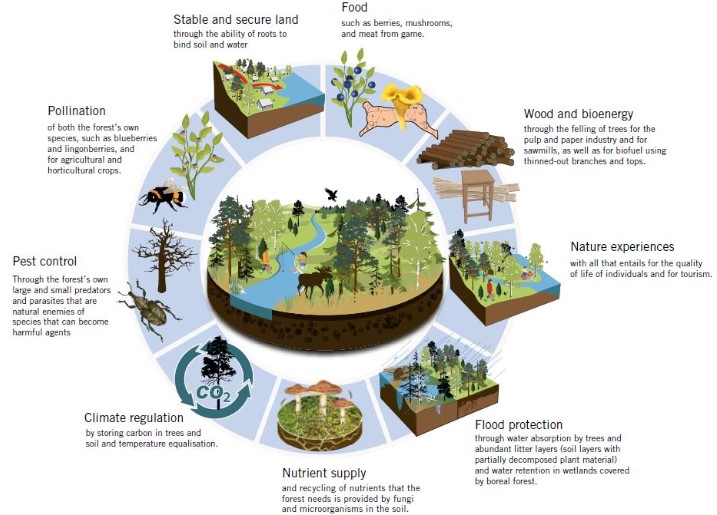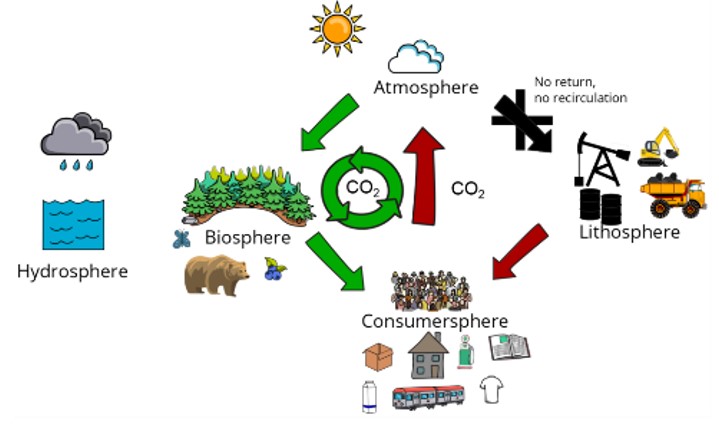Module A8 – Forest bioeconomy and sourcing -raw material supply
Introduction
Forests play an important role in fighting climate change, providing sustainable solutions and services that are in better harmony with nature. Embracing the sustainable forest-based bioeconomy helps us create a better future where forests thrive and contribute to our well-being. Forest-based industries, forestry and the many services they use together form the forest-based bioeconomy.
In this module, you will learn more about bioeconomy, circular economy and circular bioeconomy and its opportunities and challenges. Additionally, carbon cycle will be discussed shortly.
Bioeconomy and circular economy
In the bioeconomy, renewable natural resources are used to produce products and services like food and energy. The sustainable bioeconomy can be considered to be comprised of:
- Sustainable food production

2. Sustainable use of water ecosystems

3. Bioenergy and the use of forests

In addition to producing bioproducts and bio-based raw materials, another central role of the forest bioeconomy is to to act as global carbon stocks and sinks where wood effectively sequesters carbon dioxide from the atmosphere via photosynthesis.
Circular economy aims to extend the lifecycles of products by recycling and reusing material. Similarly, circular bioeconomy shares the same goal, but places a greater emphasis on utilizing renewable natural resources. Modern forest sector considers circularity as a key element in implementing sustainability practices.
The forest sector and the idea of a circular bioeconomy
The industry is gradually moving away from the fossil-based economy to more sustainable biobased economy. The foundation of circular bioeconomy is:
- the wellbeing of forest
- the value of goods from forest (e.g., food, timber, water)
- services provided by forest (e.g., photosynthesis, pollination)

Forestry and forest-based industries have been successfully utilised circular bioeconomy into practice by providing bio-based materials, chemicals, and energy to consumers. Recollecting used paper and board products and reusing them in production adds to the sector’s resource efficiency. The modern forest sector employs all branches of science and technology in its value chains.

The two largest producers and utilisers of bio-based resources are:
- forest sector
- agriculture and food industry
Carbon cycle and circular bioeconomy
The main source for forest growth is carbon cycle formed by the biosphere and the atmosphere. The biosphere also includes the pedosphere, or soil. Recycled raw materials, instead, come from the “consumersphere” – or human economy. Recycling used textile products and construction lumber are increasingly practiced.
The human economy, or the consumersphere, is the rapidly developing newcomer to this system, as compared to the other spheres. The human economy provides the system with only small carbon storages but influences carbon fluxes much more strongly.
Bioeconomy’s carbon cycle includes:
- atmosphere
- biosphere
- hydrosphere
- consumersphere
- lithosphere

Globally, more carbon sinks are needed primarily for two reasons:
- to compensate for past and future CO2 emissions from fossil fuel usage
- to compensate for deforestation, which is mostly caused by expanding agriculture, but also by illegal logging related to poor forest management
Opportunities and challenges
When it comes to achieving carbon neutrality through circular bioeconomy, an optimal system combines the following features:
- Captures atmospheric CO2 in plant biomass through photosynthesis at a high rate
- Stores the carbon so captured in long-lasting and circular products with high demand
- Provides means for reducing the use of fossil resources
The forest sector is needed to capture atmospheric carbon dioxide in the trees of its forests, and to convert it into various useful products. As of today, no feasible man-made carbon capture system is available on a large scale, however there is good basis to see the forestry sector becoming the most competitive and sustainable provider of net-zero carbon solutions.
